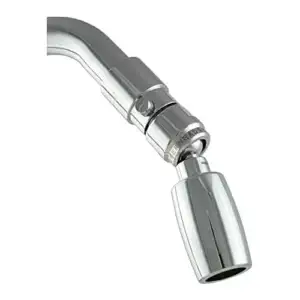Have you ever wondered what low flow shower heads are? Why are they important? What are their advantages? In this article we will answer these and many other questions.
To start with, a low flow shower head is a device designed to reduce the amount of water used during the shower, without sacrificing the cleaning experience. These shower heads work by limiting the flow of water, using a technology that mixes air with the water to create a sensation of greater pressure. In this way, they allow the user to enjoy a refreshing shower while consuming less water, which is beneficial both for the environment and for efficient water saving.
This is achieved through smaller orifices or through mechanisms that regulate the flow. Thus, even though the volume of water coming out of the showerhead is less, the showering experience remains pleasant. This not only contributes to water conservation, but also allows users to enjoy more sustainable showers.
Advantages of Having a Low Flow Shower head
One of the main advantages of using a low flow shower head is water savings. In a world where water resources are becoming increasingly scarce, reducing water consumption in everyday activities such as showering can have a significant impact. According to studies, a low flow shower head can save 30% to 50% water compared to traditional showerheads. This not only helps the environment, but also translates into lower water bills.
In addition to the water savings, low flow shower heads are often easier to install than other types of showerheads. Most of them can be mounted on any standard shower system without the need for special tools. This means that anyone can enjoy the benefits of a low flow shower head without costly modifications to their bathroom.

Another significant advantage is that many of these heads are designed to be more energy efficient. By reducing the volume of hot water used, the amount of energy required to heat the water is also reduced, resulting in lower energy consumption and, therefore, lower bills. This is especially important in homes where electric water heaters are used.
Low-flow showerheads are designed to operate at flow rates ranging from approximately 1.5 to 2 gallons per minute (gpm), compared to traditional showerheads that can have a flow rate of 5 gpm. EPA WaterSense regulations state that showerheads must have a maximum flow rate of 2 gpm to be considered efficient. When choosing a low-flow showerhead, it is advisable to look for those that meet this standard, as they ensure adequate performance without wasting water. A WaterSense-labeled showerhead can save a family of four up to 2,700 gallons of water per year compared to traditional showerheads.
Types of water saving shower heads
Conclusion and Recommendations
When choosing a low-flow showerhead, there are several factors to consider to ensure you select the right one for your needs. First, evaluate the water pressure in your home. If the pressure is low, a showerhead that uses air technology may be the best choice, as it provides a pleasant showering experience without wasting water.
Also, consider the type of showerhead that best suits your personal preferences. If you prefer quick, direct showers, a fixed head may be sufficient. However, if you enjoy flexibility, a handheld or mobile head may be more appropriate.
It’s also important to research the efficiency ratings of the heads you’re considering. Look for models that have water-saving certifications, such as the WaterSense label, which ensures that the product meets efficiency standards.
Finally, don’t forget to read reviews from other users. Reviews can provide valuable information about the durability and performance of low flow shower heads, helping you make an informed decision.
If you are interested in what you have read and would like to learn more about important aspects such as this in the world of plumbing, we invite you to read our article on potable water. In this article we show you other types of systems that also prioritize savings.



0 Comments